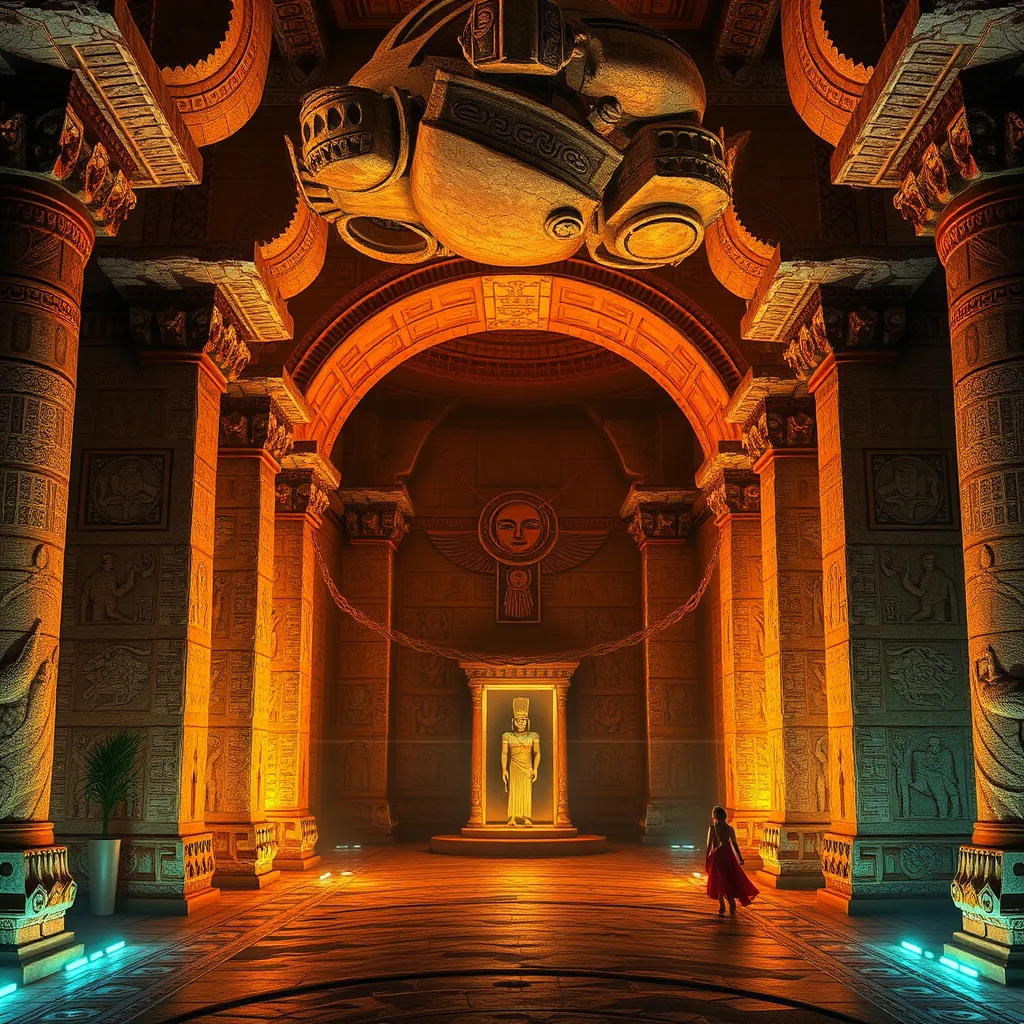The Underworld Unveiled: Exploring the Duat’s Legends
I. Introduction to the Duat
The Duat, often referred to as the Egyptian underworld, is a significant aspect of ancient Egyptian belief systems. It represents a realm where the souls of the deceased journey after death, playing a crucial role in the Egyptian understanding of life, death, and the afterlife.
In ancient Egyptian mythology, the Duat is depicted as a complex landscape filled with various challenges and trials that the souls must navigate. It embodies the transition from the mortal world to the eternal, where the fate of the deceased is determined by their actions in life.
II. Historical Context of the Duat
The concept of the Duat has its origins in ancient Egyptian mythology, dating back to the earliest dynasties. It evolved over centuries, reflecting changes in religious beliefs, societal structures, and cultural values.
Throughout different dynasties, the Duat transformed in its representation and significance:
- In the Early Dynastic Period, it was primarily a shadowy realm of the dead.
- By the Middle Kingdom, it became more organized, with well-defined pathways and deities.
- In the New Kingdom, the Duat was richly illustrated in tombs, emphasizing the journey and the afterlife’s pleasures.
III. Geography of the Duat
The Duat is often described as a vast and varied landscape, comprising different regions, each with unique characteristics. It is depicted in various ancient texts and artwork as a place filled with lakes, deserts, and mountains.
Key locations within the Duat include:
- The Field of Reeds: A paradise for the righteous, resembling the Nile’s lush banks.
- The Hall of Two Truths: Where souls undergo the judgment of Osiris.
- The Lake of Fire: A place of punishment for the wicked.
Symbolism plays a crucial role in these regions, representing the dualities of life and death, order and chaos, and the journey to redemption.
IV. Deities of the Duat
The Duat is populated by numerous gods and goddesses who guide and judge the souls of the deceased. Among the most notable deities are:
1. Osiris, the Ruler of the Duat
Osiris is one of the most significant figures in the Duat, often depicted as a green-skinned god symbolizing rebirth and regeneration. As the ruler, he oversees the judgment of souls and ensures that order is maintained within the realm.
2. Anubis, the God of Mummification and the Afterlife
Anubis is depicted with a jackal head and is associated with mummification and the protection of the dead. His role is vital in guiding souls through the Duat and preparing them for the judgment that awaits.
These deities embody the principles of order, justice, and resurrection, reflecting the Egyptians’ beliefs about the afterlife.
V. The Journey Through the Duat
The journey through the Duat begins with the process of dying, where the soul separates from the body and embarks on a perilous journey. This journey is fraught with trials and challenges that the deceased must overcome to reach the afterlife.
One of the most significant moments in this journey is the “Weighing of the Heart” ceremony, where the heart of the deceased is weighed against the feather of Ma’at, the goddess of truth and justice. The outcomes of this ceremony determine the fate of the soul:
- If the heart is lighter than the feather, the soul is deemed worthy and can enter the Field of Reeds.
- If the heart is heavier, it is devoured by Ammit, a fearsome creature, signifying eternal damnation.
VI. Mythological Tales and Legends
The Duat is rich with mythological tales that illustrate its significance in Egyptian culture. A key myth is that of Osiris, who was murdered by his brother Set and subsequently resurrected by his wife, Isis. This story symbolizes the eternal struggle between order (Osiris) and chaos (Set), a central theme in Egyptian mythology.
Legends surrounding the Duat also emphasize the importance of maintaining Ma’at, the principle of cosmic order, which the gods and the deceased must uphold.
VII. Art and Literature Depicting the Duat
The Duat has been a prominent subject in ancient Egyptian art and literature. Tomb paintings often illustrate various aspects of the Duat, including the journey of the deceased, the judgment, and the rewards awaiting the righteous.
Literary texts, such as the Book of the Dead, provide detailed descriptions of the Duat, offering guidance to the deceased on their journey. These texts serve as a manual for navigating the challenges of the afterlife and highlight the beliefs surrounding death and resurrection.
VIII. Modern Interpretations and Legacy
Today, the legends of the Duat continue to influence contemporary culture and literature. From films to novels, the themes of life after death and the journey of the soul resonate with modern audiences.
The Duat’s legacy is also evident in modern spirituality, where many seek to understand their own beliefs about the afterlife in relation to ancient Egyptian concepts. Academic studies continue to explore the significance of the Duat, shedding light on its complexities and its impact on ancient and modern thought.
IX. Conclusion
In summary, the Duat holds immense significance in understanding ancient Egyptian beliefs about the afterlife, morality, and the cosmic order. Its rich mythology, diverse deities, and intricate landscapes provide a fascinating glimpse into a culture deeply concerned with the fate of the soul.
The enduring impact of the Duat’s legends can be seen in today’s world, as they continue to shape our understanding of life, death, and the mysteries that lie beyond. Whether through artistic expression or spiritual exploration, the Duat remains a timeless symbol of humanity’s quest for meaning.




